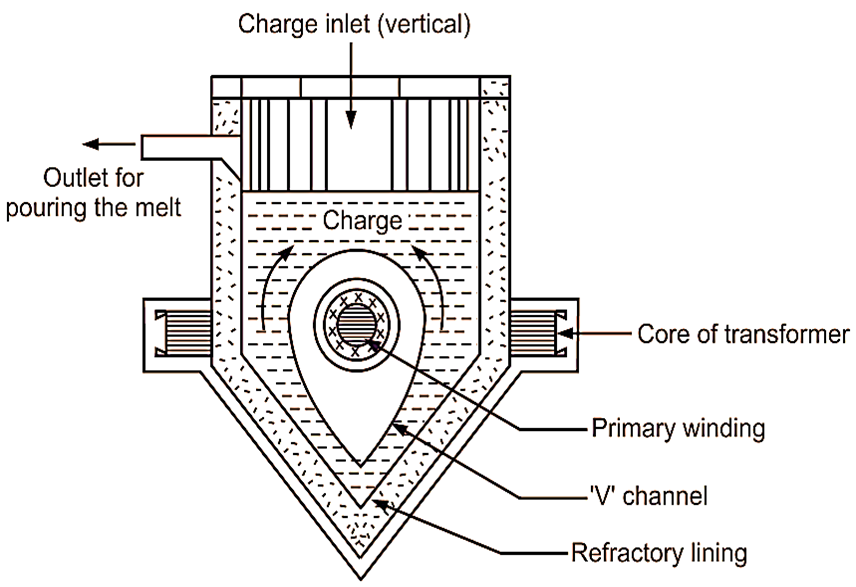
Fig. 1: Ajax-Wyatt Induction Furnace
Construction of Vertical Core Type Induction Furnace
It consists of a transformer with horizontal core and vertical channel for the charge. Secondary is formed by the charge itself. Comparatively better magnetic coupling between primary and secondary is obtained due to ‘V’ shape. So the odd shaped crucible is avoided. In the upper portion, inlet is provided for the charge. Outlet for pouring the molten metal is also provided. Mechanical geared fitting is provided at the bottom of the furnace. Refractory lining is provided to reduce heat loss.
Working of Vertical Core Type Induction Furnace
The ‘V’ shaped channel is always filled with molten metal. The total melt is never drained out from the furnace. Even if the furnace is not functioning a low voltage is maintained across the primary with the help of auto transformer which circulates currents and thus keeping the charge in the molten stage. Now the additional charge to be melted is poured in the furnace. Then primary is given A.C. supply causing heavy current in the material housed in ‘V’ channel. Thus heat is produced which is utilized for melting the charge. The circulation of molten metal takes place in ‘V’ channel due to convection. The high temperature metal goes up and low temperature metal comes down. Thus, the stirring action is automatically obtained. This causes homogeneous heating.
Advantages of Vertical Core Type Induction Furnace
- Magnetic coupling between primary and secondary is better.
- Leakage flux is less, hence power factor is high (about 0.8 to 0.85).
- It is not necessary to operate this furnace on low frequency supply, hence no alternator set is required, so overall cost is less
- Odd shaped crucible is not required.
- Pinch-off effect Is avoided.
Uses of Vertical Core Type Induction Furnace
Upto 2 tonnes commercially used for melting non-ferrous metals like copper, brass etc.